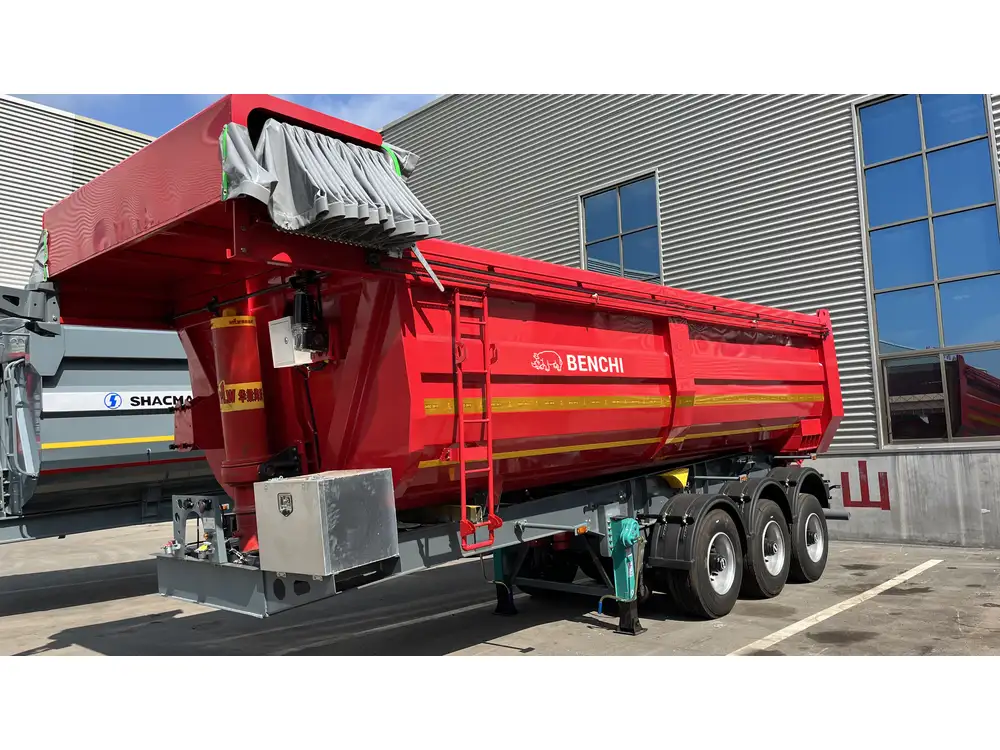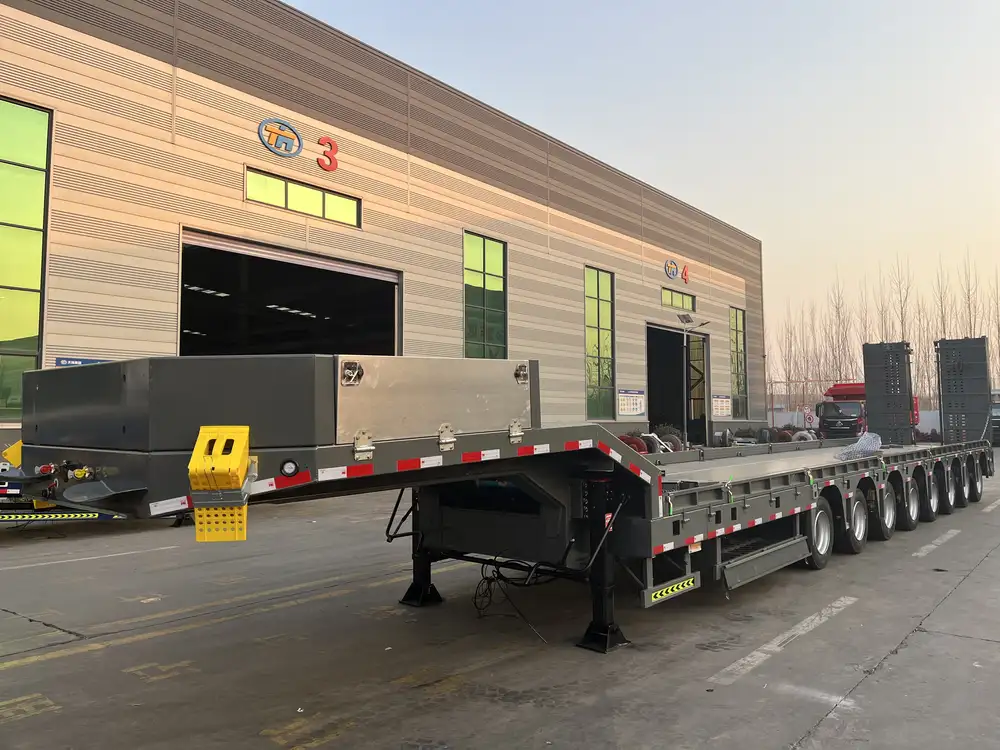In the vast world of semi-trailers, every detail counts—especially when it comes to understanding the various abbreviations and markings that define a trailer’s features and specifications. One frequently encountered marking is “ST.” But what does “ST” mean on a semi-trailer? In this thorough exploration, we unveil the intricacies associated with this abbreviation and its relevance in the manufacturing and operational worlds of semi-trailers.
Decoding the “ST” Designation: What Does It Mean?
1. Breakdown of the “ST” Acronym
The term “ST” generally stands for Special Trailer. This designation indicates that the trailer has been manufactured to meet specific requirements, often tailored for unique types of hauling. “ST” trailers are distinguished from regular trailers by specific features designed to address the needs of particular industries or applications.
| Designation | Meaning | Application |
|---|---|---|
| ST | Special Trailer | Designed for unique hauling requirements |

2. Purpose and Importance of “ST” Trailers
The necessity for specialized trailers becomes evident when considering the diverse logistics and transportation needs across various sectors. ST trailers often include features intended for transporting specific cargo types, such as:
- Refrigerated Goods: Enhanced insulation systems to maintain temperature-sensitive products.
- Hazardous Materials: Specially designed compartments and containment systems.
- Heavy Equipment: Reinforced structures to bear increased loads without compromising integrity.
Types of “ST” Trailers and Their Use Cases
Understanding the different types of “ST” trailers enhances our grasp of their applications:
1. Flatbed ST Trailers
Flatbeds are remarkable for their versatility. Commonly used in construction, agriculture, and general freight transport, flatbed “ST” trailers provide an open platform, with no sides or roof. This design allows for easy loading and unloading, accommodating oversized loads seamlessly.

2. Enclosed ST Trailers
When it comes to transporting sensitive or valuable cargo, enclosed “ST” trailers shine. These trailers provide protection from environmental factors, theft, and damage, making them ideal for:
- Electronics
- Furniture
- High-value machinery
3. Lowboy ST Trailers
Lowboys are designed for transporting heavy equipment and machinery. Their low profile lowers the center of gravity, ensuring stability during transport. Lowboy “ST” trailers can carry items like:
- Bulldozers
- Cranes
- Other cumbersome machinery
4. Dump ST Trailers
Dump trailers are valuable assets in construction and landscaping. Their unique design allows for the unloading of materials like sand, gravel, and debris efficiently. The capability to tilt ensures quick and easy disposal.

Key Features of “ST” Trailers
1. Enhanced Durability
“ST” trailers are engineered with robust materials, often featuring reinforced steel or aluminum frames. This added durability contributes to a longer lifespan and reduced maintenance costs, making them cost-effective in the long run.
2. Customizable Options
Many manufacturers offer customizable features, allowing clients to tailor their “ST” trailers according to specific operational needs. Custom options may include:
- Adjustable axles
- Enhanced suspension systems
- Specialized door configurations

3. Compliance with Regulations
One primary reason businesses opt for “ST” designation trailers is compliance with industry-specific regulations. Features such as:
- DOT-approved lighting systems
- VDOT weight restrictions compliance
- Environmental considerations for hazardous materials
Potential Issues Associated with “ST” Trailers
While “ST” trailers bring a multitude of benefits, there are some potential concerns that users may encounter:
1. Higher Initial Investment
Given their specialized nature, “ST” trailers often require a higher initial purchase price. Businesses must conduct a cost-benefit analysis to ensure the investment aligns with their operational needs.

2. Service Availability
Finding service centers or parts for specialized trailers can sometimes pose challenges. Users need to ensure that they have access to support networks for repairs and maintenance.
3. Regulatory Compliance
For some users, especially in specialized industries such as waste transport or hazardous materials, keeping abreast of regulatory compliance can be a daunting task. Regular training and updates are essential to avoid any legal pitfalls.
Maintenance Tips for ST Trailers
Efficient maintenance ensures the longevity and optimal performance of “ST” trailers. Here are some essential maintenance tips:

1. Regular Inspections
Conduct comprehensive inspections at regular intervals to identify issues early. Check the following:
- Tires for wear or damage
- Brake systems for responsiveness
- Cargo space for any signs of wear or potential leaks
2. Lubrication and Hydraulic Checks
Ensure that all moving parts are adequately lubricated. Regularly check the hydraulic systems for leaks or fluid loss, especially in dump trailers and other hydraulic models.
3. Cleanliness and Care
Keeping the trailer clean not only maintains its appearance but also prevents long-term damage due to accumulated debris, dirt, or corrosive materials.

Enhancing Traction and Stability
For “ST” trailers, particularly those hauling heavy or oversized loads, enhancing traction and stability is paramount. Several strategies can ensure safer transportation:
1. Load Distribution
Proper load distribution is essential for maintaining balance. Uneven loads can lead to compromised handling and increase the risk of accidents. Use the following principles:
- Place heavier items towards the front.
- Distribute weight evenly across the axles.
2. Selecting Appropriate Tires
Tire selection directly impacts the stability of “ST” trailers:
| Tire Type | Benefits | Best For |
|---|---|---|
| All-Terrain | Versatile on various surfaces | General use and mix terrain |
| Radial | Improved fuel efficiency, longevity | Long hauls |
| Bias-Ply | Cost-effective for short tasks | Local deliveries |

Conclusion: The Significance of “ST” Markings on Semi-Trailers
In summary, understanding the “ST” marking on semi-trailers is not merely a matter of trivia; it holds significant implications for manufacturers, operators, and logistics professionals alike. The “Special Trailer” designation reflects a commitment to meeting unique transportation needs across diverse industries, offering specialized solutions that can elevate operational efficiency.
Key Takeaways
- “ST” stands for Special Trailer, highlighting customized features tailored for unique cargo needs.
- Various types of “ST” trailers cater to different industries, each with specific benefits and potential challenges.
- Maintenance and careful handling are crucial for maximizing the service life and performance of “ST” trailers.
By embracing the intricacies of “ST” trailers, businesses can improve logistics, comply with industry regulations, and enhance overall efficiency while maintaining a competitive edge in the ever-evolving transport landscape. As the landscape of transportation continues to evolve, so too will the definitions and designs of the trailers that carry our world forward—making informed choices regarding “ST” trailers imperative for future success.



